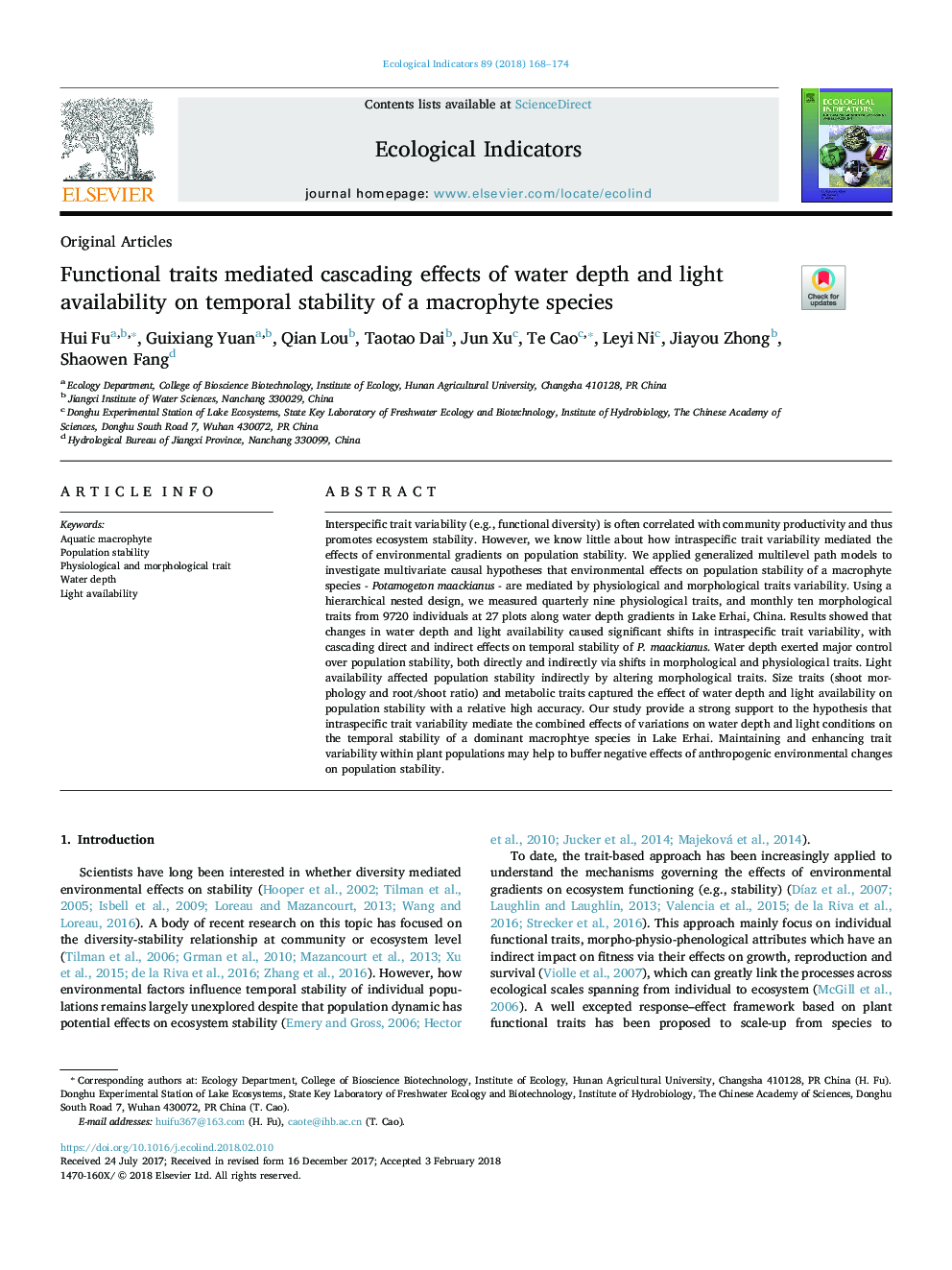| Article ID | Journal | Published Year | Pages | File Type |
|---|---|---|---|---|
| 8845449 | Ecological Indicators | 2018 | 7 Pages |
Abstract
Interspecific trait variability (e.g., functional diversity) is often correlated with community productivity and thus promotes ecosystem stability. However, we know little about how intraspecific trait variability mediated the effects of environmental gradients on population stability. We applied generalized multilevel path models to investigate multivariate causal hypotheses that environmental effects on population stability of a macrophyte species - Potamogeton maackianus - are mediated by physiological and morphological traits variability. Using a hierarchical nested design, we measured quarterly nine physiological traits, and monthly ten morphological traits from 9720 individuals at 27 plots along water depth gradients in Lake Erhai, China. Results showed that changes in water depth and light availability caused significant shifts in intraspecific trait variability, with cascading direct and indirect effects on temporal stability of P. maackianus. Water depth exerted major control over population stability, both directly and indirectly via shifts in morphological and physiological traits. Light availability affected population stability indirectly by altering morphological traits. Size traits (shoot morphology and root/shoot ratio) and metabolic traits captured the effect of water depth and light availability on population stability with a relative high accuracy. Our study provide a strong support to the hypothesis that intraspecific trait variability mediate the combined effects of variations on water depth and light conditions on the temporal stability of a dominant macrophtye species in Lake Erhai. Maintaining and enhancing trait variability within plant populations may help to buffer negative effects of anthropogenic environmental changes on population stability.
Related Topics
Life Sciences
Agricultural and Biological Sciences
Ecology, Evolution, Behavior and Systematics
Authors
Hui Fu, Guixiang Yuan, Qian Lou, Taotao Dai, Jun Xu, Te Cao, Leyi Ni, Jiayou Zhong, Shaowen Fang,
